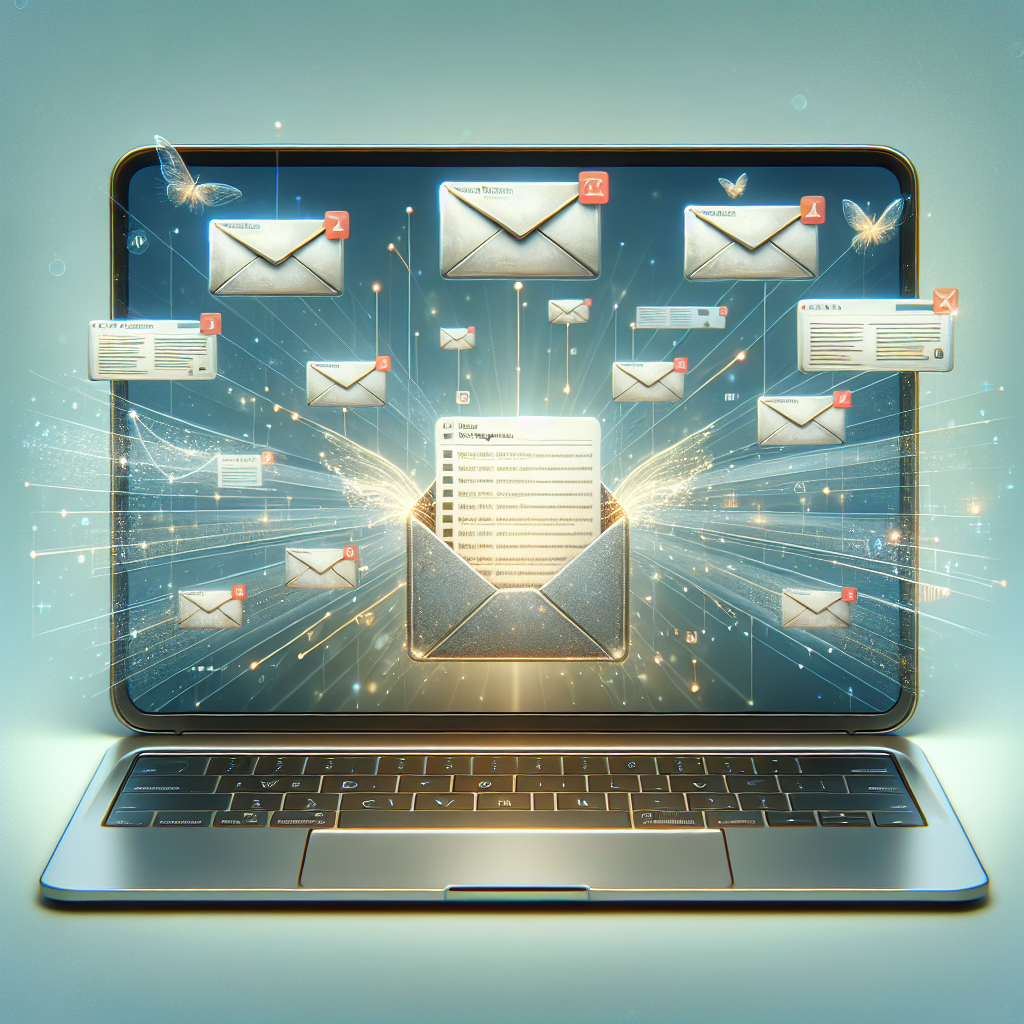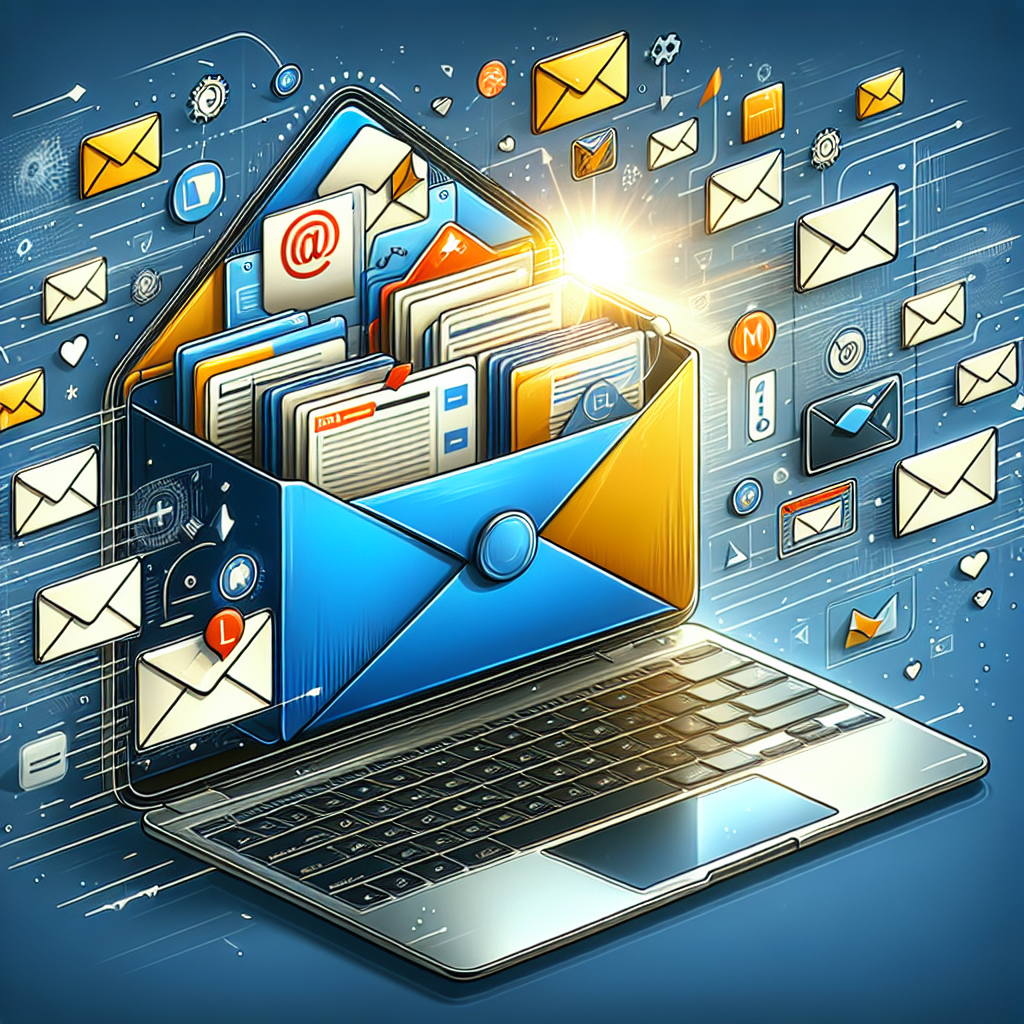In this article, you will learn the basics of email marketing and discover useful tips to get started. Whether you’re a beginner or someone looking to enhance their marketing skills, this guide will provide you with valuable insights on how to effectively use email as a marketing tool. From building your email list to crafting compelling messages, we’ll cover everything you need to know to ensure your email campaigns resonate with your audience and drive results. So, if you’re ready to take your marketing efforts to the next level, let’s dive into the world of email marketing for beginners!

Choosing an Email Marketing Platform
When it comes to email marketing, choosing the right platform is crucial. There are several factors to consider when making this decision.
Consider your budget
Before diving into the world of email marketing, it’s important to determine your budget. While some platforms offer free plans, others charge a monthly fee based on the number of subscribers or emails sent. Take the time to evaluate your financial resources and choose a platform that aligns with your budgetary requirements.
Evaluate available features
Different email marketing platforms offer various features and functionalities. Some common features to consider include contact management, email templates, automation, segmentation, and analytics. Think about the specific features that are important to your email marketing strategy and select a platform that provides them.
Assess customer support
Customer support is an essential aspect to consider when choosing an email marketing platform. Look for platforms that offer reliable and responsive customer support, including options such as live chat, email, or phone support. Having timely and helpful assistance can make a significant difference in managing your email campaigns effectively.
Look for a user-friendly interface
A user-friendly interface is essential for beginners in email marketing. Look for platforms that provide intuitive tools and an easy-to-navigate dashboard. A platform with a clean and straightforward interface will make it easier for you to create, manage, and analyze your email campaigns.
Building and Managing an Email List
Building and managing an email list is the foundation of successful email marketing. It’s important to follow best practices to ensure the growth and engagement of your subscribers.
Define your target audience
Before you can build an email list, you need to define your target audience. Understanding who your ideal customers are will help you create content and offers that resonate with them. Take the time to research and identify your target audience’s demographics, interests, and pain points.
Create lead magnets
Offering valuable content or incentives, known as lead magnets, is an effective way to entice visitors to join your email list. Lead magnets can include ebooks, checklists, templates, or exclusive discounts. Create compelling lead magnets that align with your target audience’s interests and provide them in exchange for their email addresses.
Use opt-in forms
Opt-in forms are the gateway to growing your email list. These forms allow visitors to voluntarily provide their contact information. Place opt-in forms strategically on your website, such as in the sidebar, footer, or as a pop-up. Make sure your opt-in forms are visually appealing and clearly explain the benefits of subscribing.
Segment your email list
Segmenting your email list involves categorizing subscribers based on their characteristics or behaviors. By segmenting your list, you can send targeted and personalized emails that resonate with specific groups of subscribers. Segment your list based on factors such as demographics, purchase history, engagement, or lead magnet interests.
Creating Compelling Email Content
Once you have an email list, the next step is to create compelling content that engages and converts your subscribers. Effective email content requires careful planning and execution.
Understand the purpose of your email
Before writing an email, it’s important to define its purpose. Are you trying to inform, educate, promote, or engage your subscribers? Understanding the purpose of your email will help you craft a focused and effective message. Align your email content with your overall marketing goals and tailor it to your target audience.
Craft attention-grabbing subject lines
The subject line is the first thing your subscribers see in their inbox, so it needs to grab their attention. Use concise and compelling words that create curiosity and encourage open rates. Experiment with different subject lines and A/B test to see which ones work best for your audience.
Write engaging email copy
Once your subscribers open your email, the copy needs to keep their attention. Use a conversational and friendly tone while emphasizing the value and benefits of your content or offer. Make your email copy scannable with bullet points, subheadings, and concise paragraphs. Consider incorporating storytelling techniques to create a personal connection with your subscribers.
Include a call to action
Every email should have a clear and compelling call to action (CTA). The CTA tells your subscribers what action you want them to take next, whether it’s making a purchase, downloading a free resource, or visiting your website. Use action-oriented words and provide a sense of urgency to encourage your subscribers to click on your CTA.
Designing Email Templates
The design of your email templates plays a significant role in attracting and retaining the attention of your subscribers. A well-designed email can increase open rates and engagement.
Choose a responsive email template
With a large percentage of email opens happening on mobile devices, it’s crucial to choose a responsive email template. Responsive templates automatically adapt to different screen sizes, ensuring that your emails display properly on desktops, smartphones, and tablets. Look for a platform that offers a variety of responsive templates or consider using a responsive email builder.
Keep the design simple and clean
Simplicity and cleanliness are key when it comes to email design. Avoid cluttered layouts, excessive images, or large chunks of texts. Use white space effectively to give your email a clean and polished look. Keep your branding consistent throughout your emails to reinforce your brand identity.
Utilize branding elements
Your email templates should reflect your brand and its visual identity. Incorporate your logo, colors, and fonts into your email design. Consistency in branding builds trust and recognition among your subscribers. Make sure your branding elements are visible but not overpowering, as the focus should be on your content.
Optimize for mobile devices
Optimizing your email templates for mobile devices is crucial for a seamless user experience. Test your emails on different mobile devices and email clients to ensure they render correctly. Use larger font sizes, clear call-to-action buttons, and remove any unnecessary elements that may cause display issues on smaller screens.

Automating Email Campaigns
Automation allows you to streamline your email marketing efforts by sending targeted messages at the right time. Implementing automated email campaigns can save you time and increase the effectiveness of your email marketing strategy.
Set up automated welcome emails
Welcome emails are the first impression your subscribers have of your brand. Set up an automated welcome email series to greet and introduce new subscribers. Use these emails to provide valuable content, set expectations, and encourage engagement with your brand. Personalize the emails with the subscriber’s name for a more tailored experience.
Implement drip campaigns
Drip campaigns are a series of automated emails sent over a specific period or triggered by certain actions. These campaigns allow you to nurture your subscribers and guide them through the customer journey. Create content that addresses each stage of the customer’s buying cycle and set up automated emails to be sent accordingly.
Personalize automated emails
Personalization is key to creating a meaningful connection with your subscribers. Utilize merge tags or variables to include personalized elements, such as the subscriber’s name, location, or past interactions with your brand. Tailor your automated emails based on the subscriber’s preferences and behaviors to make them feel valued and understood.
Monitor and optimize automation
Once your automated email campaigns are up and running, it’s important to regularly monitor and optimize their performance. Analyze metrics such as open rates, click-through rates, and conversion rates to identify areas for improvement. Experiment with different subject lines, email timings, and content to optimize your automated campaigns for better results.
Testing and Analyzing Email Campaigns
Testing and analyzing your email campaigns is essential for continuous improvement and maximizing their effectiveness.
A/B test subject lines
Subject lines have a significant impact on email open rates. Conduct A/B tests by sending two variations of your subject lines to a small portion of your email list. Monitor the open rates for both variations and determine which subject line performs better. Use the winning subject line for the remaining portion of your list to maximize open rates.
Experiment with different layouts
Email layouts play a crucial role in how your subscribers perceive and interact with your content. Experiment with different layout designs to identify which drives higher engagement. Test variations such as single-column layouts, multi-column layouts, or minimalistic designs. Analyze click-through rates and user feedback to determine the most effective layout for your audience.
Analyze open and click-through rates
Open rates and click-through rates provide insights into how engaging and relevant your emails are to your subscribers. Analyze these metrics to understand which emails resonate most with your audience. Identify patterns or trends in the email content, subject lines, or timing that correlate with higher open and click-through rates.
Track conversions and ROI
Ultimately, the success of your email marketing campaigns lies in the conversions and return on investment (ROI) they generate. Set up tracking mechanisms to monitor the conversion rates of your emails. Determine which campaigns or emails drive the highest conversions and calculate the ROI based on the resources invested. Use this data to allocate your resources effectively and improve future campaigns.

Ensuring Email Deliverability
Email deliverability determines whether your messages land in the inbox or the spam folder. Taking steps to optimize deliverability is crucial for the success of your email marketing efforts.
Maintain a healthy sender reputation
Email service providers take into account your sender reputation when deciding whether to deliver your emails to the inbox. Maintain a good sender reputation by sending relevant and engaging emails, avoiding spam complaints, and regularly cleaning your email list of inactive or invalid addresses.
Use double opt-in
Implementing a double opt-in process adds an extra layer of confirmation for your subscribers. After users submit their email address, they receive a confirmation email and must click on a verification link to confirm their subscription. Double opt-in reduces the chances of fake or mistyped email addresses and helps maintain a high-quality email list.
Avoid spam triggers
To ensure your emails don’t trigger spam filters, avoid using spammy words or phrases in your subject lines or email copy. Words such as “free,” “discount,” or excessive use of exclamation marks can raise red flags. Carefully review and test your emails to ensure they pass spam filters and reach the inbox.
Monitor bounced and unsubscribed emails
Monitor the number of bounced and unsubscribed emails to identify potential problems with your email list or content. High bounce rates could indicate issues with email addresses, while high unsubscribe rates may indicate a lack of engagement or relevant content. Regularly analyze these metrics and take necessary actions to reduce bounce and unsubscribe rates.
Complying with Email Marketing Laws
Adhering to email marketing laws is essential to protect your brand’s reputation and maintain trust with your subscribers.
Familiarize yourself with CAN-SPAM Act
The CAN-SPAM Act sets guidelines for commercial emails and provides recipients with the right to opt-out or unsubscribe from email lists. Familiarize yourself with the requirements of the CAN-SPAM Act, such as including a physical address in your emails, providing a clear unsubscribe option, and honoring opt-out requests promptly.
Respect international data protection regulations
If you have subscribers or customers from different countries, it’s crucial to comply with international data protection regulations such as the General Data Protection Regulation (GDPR) in the European Union. Ensure you have explicit consent from your subscribers to collect and use their personal data, and provide them with options to manage their preferences or delete their data.
Include an unsubscribe option
Every email you send should include a clear and prominent unsubscribe option. Make it easy for your subscribers to opt-out of your emails if they no longer wish to receive them. Observe and process unsubscribe requests promptly to maintain compliance with email marketing laws.
Honor user preferences
Respecting your subscribers’ preferences is crucial for maintaining a positive relationship. Provide options for subscribers to choose their email frequency or select the types of content they want to receive. Make it easy for them to update their preferences and honor their choices promptly.

Optimizing Email for Mobile
With more people accessing emails on their mobile devices, optimizing your emails for mobile is essential to provide a seamless user experience.
Prioritize mobile-friendly design
Design your emails with mobile devices in mind. Prioritize mobile-friendly design elements such as larger fonts, clear CTA buttons, and optimized layouts that adapt to smaller screens. Use responsive email templates that automatically adjust and display correctly on mobile devices.
Optimize content for smaller screens
Consider the limitations of smaller screens when creating your email content. Keep paragraphs concise and avoid lengthy blocks of text. Use bullet points, subheadings, and images strategically to make your content scannable on mobile devices. Optimize images for quick loading times and ensure they don’t disrupt the flow of your email on smaller screens.
Use responsive email templates
Using responsive email templates is a key component of mobile optimization. Responsive templates adjust the layout, font sizes, and images based on the screen size, ensuring a consistent and user-friendly experience across different devices. Choose a platform or email builder that offers a variety of responsive templates to make mobile optimization easier.
Test email rendering on different devices
Before sending out your emails, test them on different mobile devices and email clients to ensure they render correctly. Check formatting, image display, and the overall readability of your emails. Testing on various devices, such as iPhones, Android phones, and different email providers, will help you catch any potential issues and make necessary adjustments.
Implementing Email Marketing Best Practices
Following email marketing best practices is crucial for building strong relationships with your subscribers and maximizing the effectiveness of your campaigns.
Focus on permission-based email marketing
Always obtain permission from your subscribers before adding them to your email list. Permission-based email marketing ensures that your subscribers have consented to receive emails from you, reducing the chances of being marked as spam. Respect your subscribers’ privacy and preferences by explicitly explaining how their information will be used.
Personalize emails based on user data
Personalization enhances the effectiveness of your emails. Utilize the data you have collected from your subscribers, such as their name, purchase history, or past interactions, to personalize your emails. Addressing subscribers by their name and providing tailored recommendations or offers can significantly increase engagement and conversion rates.
Provide valuable and relevant content
Deliver content that is valuable, relevant, and engaging to your subscribers. Understand their pain points, preferences, and interests, and create content that addresses their needs. Provide tips, educational resources, exclusive offers, or industry insights that make your emails worth opening and reading.
Monitor and analyze campaign performance
Regularly monitor and analyze the performance of your email campaigns to understand what works and what needs improvement. Keep track of metrics such as open rates, click-through rates, conversions, and ROI. Use this data to identify trends, make data-driven decisions, and continually optimize your email marketing strategy.
In conclusion, mastering email marketing for beginners requires a comprehensive understanding of choosing the right platform, building and managing an email list, creating compelling content, designing visually appealing templates, implementing automation, testing and analyzing campaigns, ensuring deliverability, complying with laws, optimizing for mobile, and following best practices. By following these guidelines and continuously improving your strategies, you’ll be well on your way to achieving email marketing success.
